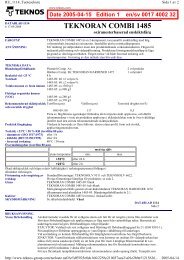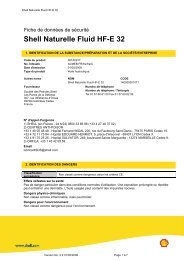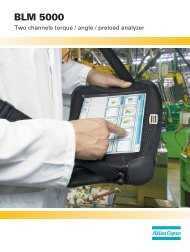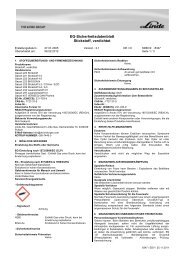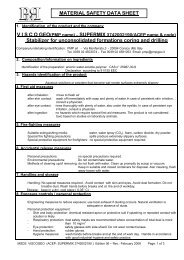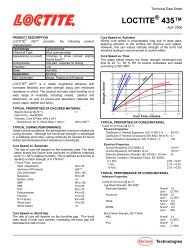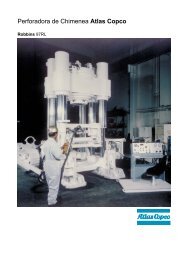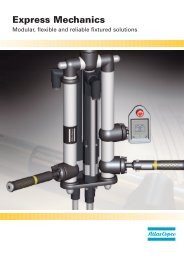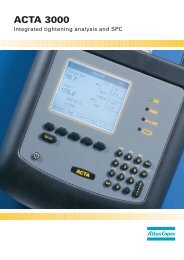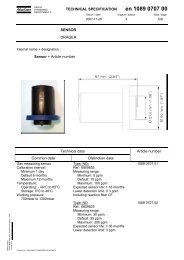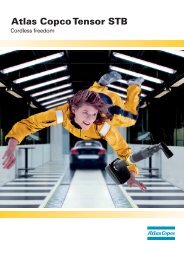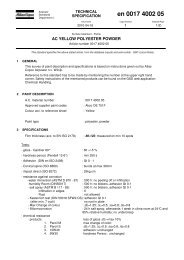Ergonomics - Atlas Copco
Ergonomics - Atlas Copco
Ergonomics - Atlas Copco
Create successful ePaper yourself
Turn your PDF publications into a flip-book with our unique Google optimized e-Paper software.
Weight suspension<br />
Tool balancers counter-balance the weight<br />
of a tool. In principle there are two types.<br />
The first type (RIL) has a lifting force<br />
which increases as the wire is extended.<br />
When a tool is suspended using this bal-<br />
ancer, its weight is offset by the lifting force.<br />
The height can be adjusted by presetting<br />
the spring in the balancer. If the tool needs<br />
to be suspended at a higher level, the spring<br />
in the balancer must be tightened.<br />
The second type of balancer, Colibri, has a<br />
built-in wire drum which compensates for the<br />
extension of the wire. When a tool is suspend-<br />
ed using this balancer it can be positioned<br />
anywhere along the length of the extended<br />
wire. The spring force in the balancer is pre-<br />
set according to the weight of the tool.<br />
Naturally, tool balancers limit the operating<br />
area of the tool. When using a balancer, it is im-<br />
portant that the counteracting force is properly<br />
adjusted. Otherwise excessive lifting forces from<br />
the balancer, may place an unnecessary load on<br />
the operator.<br />
In certain work situations such as con-<br />
struction sites, the mobility of a hand tool is<br />
very important, i.e., it should be possible to<br />
use the tool in different locations and at vari-<br />
ous angles. A weight balancer is thereforce<br />
not practical and, in such situations, the<br />
weight of the tool should always be limited.<br />
A balancer compensates for<br />
the weight of the tool.<br />
The center of gravity of the tool<br />
Another aspect of weight is the center of<br />
gravity of the tool. In some situations, if<br />
the center of gravity of the tool is not close<br />
to the operator’s wrist joint, torque may be<br />
exerted on the wrist. If applied for a pro-<br />
longed period, this may cause fatigue to the<br />
forearm muscles and injury to the wrist.<br />
To limit this torque, the tool’s center of<br />
gravity should never be far from the wrist<br />
joint. For the same reason and for maximum<br />
89



